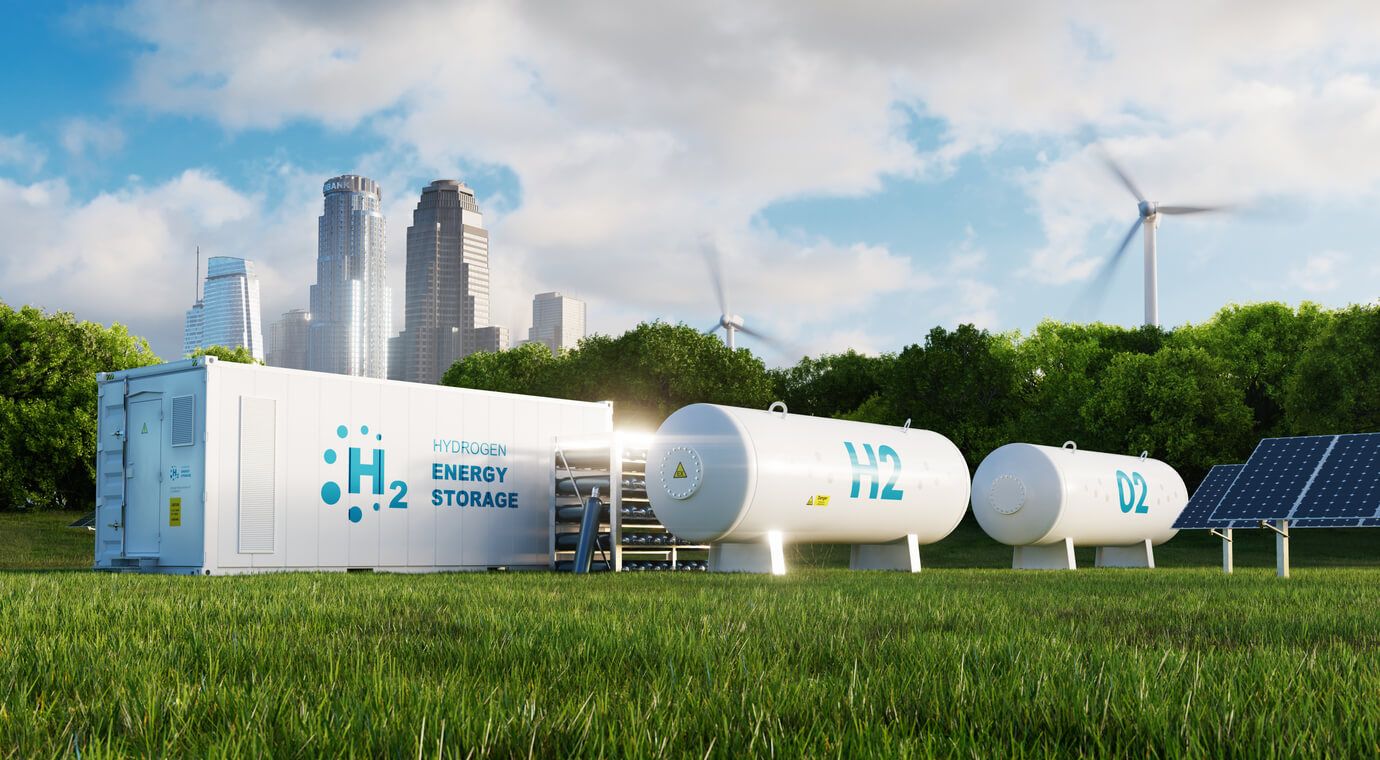Emerging Hydrogen Economies: A Look at EU and US Strategies

Hydrogen use is on the rise across the globe, with experts predicting significant growth in the commodity in 2024. This is fueled in large part by hydrogen strategies taken by world powers such as the US and EU. Nationally, governmental strategies dictate the ways in which energy suppliers and users can leverage hydrogen. But these effects aren’t limited to the country. The EU hydrogen strategy, for example, will have domino-like impacts on US-based firms, and vice-versa.
That’s why it’s critical for manufacturers and other concerned parties to know the global scope of policies. To that effect, we’ll explain below what the state of hydrogen strategy is in the EU and US.
Understanding Hydrogen Strategies
Hydrogen strategy is a blanket term for the laws and policies governing hydrogen fuel production and distribution. The EU and the US are positioned as environmental, as lawmakers intend to limit carbon emissions and usher in a new era of renewable, sustainable energy. However, they can also be seen as strategic support for certain sectors of industry.
On the business side, hydrogen strategies are designed to incentivize investment in renewable energy sources. It’s a major reason big players in the hydrogen economy, like Toyota and Chevron, have prioritized research and development in hydrogen so heavily.
Hydrogen strategy also exists to develop and support the growing hydrogen economy. As a practical example, California’s hydrogen economy leads all others in the US—and it’s not particularly close—because of its hydrogen strategy. The state employs 11.3% of clean energy workers across the US and is creating jobs as it contributes to a cleaner, greener future. Due to state-level priorities and policies (i.e., SB 1075), along with political support for national-level strategy, California has blazed a path many other states in the US would be wise to follow.
The EU’s Hydrogen Strategy
European hydrogen strategy is among the most robust and proactive in the world. The EU’s official strategy on hydrogen (COM/2020/301), adopted in 2020, focuses on select priorities, which were expanded into 20 key actions, all of which were implemented in full as of Q1 2022.
The breakdown of priorities and key actions in the EU hydrogen strategy is as follows:
- Supporting an investment agenda –
- Key Action 1: Develop an investment agenda and build a pipeline of projects
- Key Action 2: Support investment through the Strategic Investment Window
- Boosting demand and production –
- Key Action 3: Facilitate the use of hydrogen and related materials in transport
- Key Action 4: Explore demand-side policy for hydrogen in end-use sectors
- Key Action 5: Introduce a low-carbon threshold for hydrogen production
- Key Action 6: Introduce EU-wide terminology and criteria for certification
- Key Action 7: Develop a scheme for Carbon Contracts for Difference
- Implementing a supportive framework –
- Key Action 8: Plan trans-European networks of hydrogen infrastructure
- Key Action 9: Accelerate deployment of alternative refueling infrastructure
- Key Action 10: Design enabling market rules and remove barriers to deployment
- Key Action 11: Launch a call for 100MW electrolyzers and Green (Air)Ports
- Key Action 12: Establish the renewable-focused Clean Hydrogen Partnership
- Key Action 13: Support hydrogen value chains in coordination with the SET Plan
- Key Action 14: Facilitate demonstration of hydrogen technology innovations
- Key Action 15: launch a call for collaboration in carbon-intensive regions
- Facilitating international cooperation –
- Key Action 16: Strengthen EU leadership in technical standards conversations
- Key Action 17: Develop the mission within the next Mission Innovation (MI2)
- Key Action 18: Promote cooperation with select regions (i.e., Southern, Eastern)
- Key Action 19: Establish cooperation in the Africa-Europe Green Energy Initiative
- Key Action 20: Develop benchmarks for transactions denominated in euros
Moving forward, several groups within the EU aim to build on and transform its hydrogen strategies into even more powerful policy frameworks. Proposals such as the Fit-for-55 package, NextGenerationEU, and Important Projects of Common European Interest (IPCEIs) all seek to allocate greater support and funding opportunities for carbon-neutral hydrogen production.
The EU is a global leader in its hydrogen strategy—but the US is quickly catching up to it.
The US’s Hydrogen Strategy
In the US, one of the biggest obstacles to wide-scale hydrogen fuel adoption is the complexity of hydrogen infrastructure, especially when compared to the abundance of infrastructure for other energy sources. Hydrogen fuel logistics are complex, representing a burden on manufacturers and potential consumers. To counteract this, US policy incentivizes investment in the industry.
The US National Clean Hydrogen Strategy and Roadmap breaks down into three main strategies:
- Strategy 1: Target Strategic Uses of Clean Hydrogen –
- Supporting clean hydrogen in industrial applications
- Supporting clean hydrogen in the transportation sector
- Supporting clean hydrogen across the power sector
- Reducing the carbon intensity of hydrogen production
- Strategy 2: Reduce the Overall Cost of Clean Hydrogen –
- Supporting hydrogen production through water-splitting
- Supporting carbon capture in fossil fuel hydrogen production
- Supporting hydrogen production from biomass and waste feedstocks
- Reducing auxiliary and other costs in the process of hydrogen production
- Strategy 3: Focus on Supporting Regional Networks –
- Maximizing regional production potential
- Maximizing regional storage potential
- Optimizing regional end-use potential
- Supporting strategies programmatically
By far, the biggest advancement in US hydrogen policy to date was the Biden Administration’s announcement of its clean hydrogen hubs plan in October 2023. The program will allocate significant funds to the production of regional hubs in strategic locations such as the Mid-Atlantic, the Pacific Northwest, the Heartland, and more. Over $8 billion dollars in public funding and an estimated $40B plus in private funding will supercharge the production and availability of hydrogen—along with tens of thousands of jobs—all across the contiguous US.
This and other US hydrogen strategy initiatives are fueling the future of the energy economy.
Comparative Analysis of Hydrogen Strategies
Hydrogen strategies in the US and EU are more similar than they are different. The Biden Administration’s hydrogen hubs program can be seen as the US’s attempt to catch up with and potentially outdo the EU in the global race toward a carbon-neutral future. By betting big on renewable hydrogen, the US is positioning itself to become the global leader in the EU’s stead.
However, positioning and momentum are major differences between EU and US hydrogen strategies.
The EU has made hydrogen a policy focus for longer than the US has, but it is in the process of reframing its initiatives to support greener, more carbon-neutral hydrogen solutions. Per the EU Commission, hydrogen made up less than 2% of European energy consumption, and 96% of the hydrogen consumed was emission-heavy in production. By contrast, the US’s hydrogen strategy is relatively new and concerned primarily with upping hydrogen production and uptake—with the advantage of a wider and deeper pool of cross-industry expertise on which to start building.
What this means, both domestically and globally, is that stakeholders in the hydrogen industry and in any industries that could make the switch to hydrogen-powered solutions have bright futures ahead of them. The research and funding are growing, albeit trending toward specific, carbon-neutral pockets within the industry—good news for the planet and everyone involved.
The Future of Hydrogen in the EU and US
Hydrogen strategy in both the EU and the US is geared toward increasing the amount of clean hydrogen being produced and used globally. It does this by channeling investment to clean, carbon-neutral hydrogen solutions and minimizing the burdens of wide-scale adoption.
FASTECH is committed to building sustainable clean energy infrastructure and facilitating the production, transportation, and use of hydrogen fuel across the US. We’ll help your firm navigate the benefits of hydrogen fuel and governmental initiatives to get the most out of it.
Get in touch today for assistance with renewable energy projects and infrastructure.




